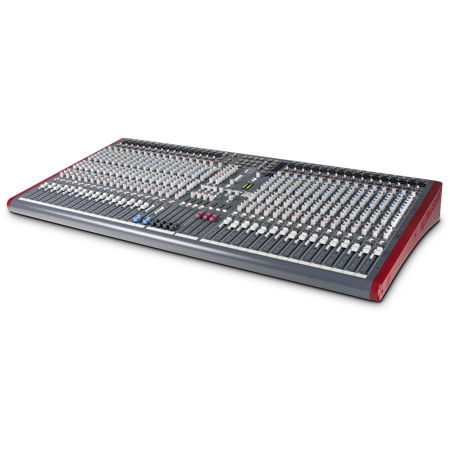





See Options
Need help? Ask our experts.
Review Summary
Accidents happen where life happens. Protect your favorite Adorama products and purchase a protection plan to stay covered from accidental damage, mechanical or electrical failure, and more.
If we can’t fix it, we’ll replace it at no additional cost.
Protect your product from drops, spills, and more.
Enjoy your gear without fear. We have you covered!
When regular use of your product over time results in mechanical or electrical failure.
We will never charge you a deductible after the purchase of a plan.
Our claims process is simple & easy and our customer service team is happy to help.
Adorama Protect powered by Extend is available for purchase to customers in the United States. Not available for purchase Internationally or in U.S. Territories.
Browse our FAQ
+6 to -63dBu for nominal (+17dBu in max)
+10 to -26dBu (+30dBu maximum)
+21dBu maximum
0dBu nominal (control = Off to +10dB)
0dBu nominal (control = Off to +10dB)
0dBu nominal +21dBu maximum
+4dBu nominal. +27dBu maximum
-2dBu nominal +21dBu maximum
+4dBu nominal. +27dBu maximum
-2dBu nominal +21dBu maximum
-2dBu nominal +21dBu maximum (Bal Option +4)
-2dBu nominal. +21dBu maximum (Bal Option +4)
0dBu nominal. +21dBu maximum
0dBu nominal. +21dBu maximum
Mic in to Mix L/R Out, 30dB gain +0.5/-1dB 20Hz to 20kHz
Line in to Mix L/R out 0dB gain +0.5/-1dB 10Hz to 30kHz
Stereo in to Mix L/R out +0.5/-1dB 10Hz to 30kHz
Mic in to Mix L/R Out, 0dB gain 1kHz +10dBu out 0.004%
Mic in to Mix L/R Out, 30dB gain 1kHz 0.014%
Line in to Mix L/R out 0dB gain 0dBu 1kHz 0.005%
Stereo in to Mix L/R out 0dB gain +10dBu 1kHz 0.003%
Analogue Headroom from nominal (0Vu) 21dB
USB in & out headroom from nominal (0Vu) 14dB
USB Audio CODEC (Coder/Decoder)
USB Audio In/Out USB 1.1 compliant 16bit
Sample Rate 32, 44.1, or 48kHz
Mix Noise, LR out, 32 channels routed, Ref +4dBu, 22-22kHz -88dB (-84dBu)
USB Audio In/Out USB 1.1 compliant 16bit
Sample Rate 32, 44.1, or 48kHz
44.7 x 5.07 x 22.1" / 1135.38 x 128.77 x 561.34mm
48.5lbs / 21.99kg
6938122229631
The Allen & Heath ZED-436 32-Channel 4 Bus Recording Mixer with USB Connection is excellent for bands, houses of worship, theatres or AV applications. It has a truly professional feature set, which will fit any sound reinforcement application and professional PA hire stock. ZED-436 has Configurable USB audio in/out makes it easy to capture stereo recordings, 32 mic or line inputs plus 2 dual stereo inputs, 4-band EQ with MusiQ, 4 sub-groups, 6 auxiliary sends and a 7x2 matrix.
USB Audio Flexibility
Getting audio to and from a computer easily is now a common requirement for live sound and music production. The way this has been implemented on ZED is super-flexible and super-easy! No longer do you need to fiddle around the back of your PC to get to the soundcard inputs, only to find that the levels are all wrong and noisy. Just plug in a USB lead to your ZED, select the USB routing on the mixer and the device on your computer and that's it! CD quality audio to and from your PC or Mac. Switches and connection through jack socket terminals provide different send/return configurations: Send Options to Main Mix Left + Right (Post-fade), Main Mix Left + Right (Pre-Fade), Auxes 1-2, Auxes 5-6 and Matrix 1-2. Return Options to Playback input and Stereo 3 channel.
MusiQ
ZED-436 has a tuned 4-band EQ taken from the acclaimed GL2200 mixer, utilizing MusiQ - with optimized slope (or Q factor) for equalizing individual instruments.
Duopre
Based on the proven pre-amps from the hugely successful PA series, ZED-436 has DuoPre pre-amps, which use a two stage design, with carefully controlled amounts of gain in each stage. When amplifying the signal from the XLR input, the gain range is huge - 69dB of range to be exact - and is very evenly distributed around the gain control, meaning better control of signal level. Most of the gain comes from the first stage, so unwanted noise is kept to a minimum. Line level signals are simply plugged into the second stage of the pre-amp by using the line input jack socket, which has the great advantage of less noise when using the line input and also matching to a higher input impedance.